
Multiculturalism is an incredible thing.
I say that from personal experience. I am a British citizen, yet I have immigrant parents. My favourite food? Asian. Favourite car? European. Favourite music artist? African-American.

Having an open mind to other cultures allows us to see and experience so much more cool sh*t than we would if we only focused on our own locale, and the same applies to car culture.
I’ve always been fascinated with how enthusiasts’ styles vary from country to country. Just look at JDM car culture versus USDM for example. Yeah sure, there’s plenty of crossover now, but at their core the approaches are remarkably different.

Now, if I were to say ‘Euro’ styling then you’d probably think BBS wheels, subtle visual mods, maybe a respray and an engine swap. You’d be right, but that’s not just Euro style. It can trace its roots back to one country. That’s German style. Where does it stem from? Well, it’s no secret that the Polizei are very strict when it comes to modified cars on German roads, so the German car enthusiast has always had to be somewhat subtle to avoid unwanted attention.

Even on the way to the Essen Motor Show last year, Saj and I saw dozens of modified cars being pulled over and inspected by police for TÜV certification.

For those who don’t know, TÜV are regulating bodies that ensure that a car (and all of its modifications) are legal for use on German roads. Whether you’re a German national or not, the police have the power to seize your car on the spot and send it to a TÜV facility, where it will be tested for roadworthiness at your expense. If the car isn’t registered in Germany and it fails the inspection, it won’t be allowed back onto German roads and you must have it recovered out past the border into another country. Ouch.

For big companies making high-end conversions or mass-produced parts, gaining TÜV certification is necessary to operate. Big R&D budgets allow approval to be gained with relative ease, but the ‘organised’ side of German tuning is something I’ll delve into another time.
Today’s focus is on the enthusiasts, the guys and gals personalising their cars for themselves, so where did it start?

The ‘old school’ approach to German style can still be seen on cars built by the die-hards who believe that the original of doing things is and will always be the best. Characterised by a low, static ride height with aggressively-fitting wheels, these cars carry with them a certain nostalgic charm which reminds you of faded photos you might come across of your dad with his prized (Golf/E21/Manta/914) in an old photo album.

This Opel Ascona is a prime example of an old school German style build in 2019. A static drop, wide custom split rims with polished lips fill the arches, and a retro satin black bonnet contrasts nicely over the silver paintwork. This gives the car a very aggressive, in-your-face appearance, yet still the car feels period correct.

What’s not period correct though is the C20LET breathing through four carbon fibre trumpets. Blacked out, relying on textural differences to break up the surfaces of the engine, it really looks stunning nestled in the resprayed engine bay. A tried and true engine swap for Opels and Vauxhalls of this era, not only does the performance and usability increase dramatically, but in this case the engine itself is a marvel to look at too.

Oh, and that small, weathered plate? That means the owner has had this car since it was near new. What a guy.

Of course, some people embrace newer technologies, such as air suspension for an unassuming ride height, yet visually still keep it simple. An ivory white C1 Audi 100, dropped on air and tucking a set of split BBS RA wheels is about as simple as you can get. The lines are clean and original, enhanced only by a chin spoiler beneath the OEM chrome front bumper. A timeless combination. Small spots of patina here and there show that it’s a car that really has been used over its long life.
In the downstairs hall, an Audi Ur-Quattro, also bagged on BBS wheels (sacrilege!), carries on the theme to great effect. Say what you want about taking a 4WD rally thoroughbred and putting it on air suspension, but a) 30-year-old shocks and springs versus a modern air setup is no contest. And b), just look at the damn thing.

Parked next to the 100, this very vibrant 964 Porsche Carrera 4 has a slightly more modern vibe to the modifications. The 911 wears more aggressively-fitted Speedline Mistral split rims, with more stretch from its Hankook tyres. It’s sad to think that the days of the narrow-body 911 are gone, what with even base-spec RWD models sharing the same wide hips as the more powerful, 4WD 4S models now. Shame.

In a slightly surprising twist, this C123 Mercedes-Benz 230 CE was actually featured on Mercedes’ own stand, in an exhibit celebrating owners’ commitment to the brand and how they choose to cherish their cars. Much like the Audi above, it wasn’t flawless and you can see it’s had a long life, but it wears its miles well with choice parts such as polished Rial mesh wheels, a front air dam and Nardi woodgrain steering wheel.

Some might argue that these cars are all very same-y, or that they’re nothing special. You have to bear in mind though, that in a country where your car can get impounded for being too loud from factory (à la GT3 RS), it’s nice to be able to enjoy it with as little attention being drawn to yourself as possible. On the flip side, there will always be people who can’t settle and will go the extra mile, or five.

Take this Mk1 VW Scirocco. Sure, from a distance it takes the old school approach to tuning with a drop on narrow wheels, yet it doesn’t take long to realise that there are almost no standard parts left on this car at all. Chrome bumpers have been remade with carbon fibre to replace the OEM plastic inserts. The wing mirrors and even the single windscreen wiper stalk have been fashioned out of carbon fibre too.
A beautiful period correct pastel blue paint job, full interior retrim and sitting low on Air Lift Performance suspension, this little coupé straddles the lines between a modern and classic German build to great effect.


There were more examples of this ‘modern classic’ approach dotted around the vast halls. Spotless engine bays with OEM power plants, classic wheels cut up and converted to three-piece, even Japanese cars built to German style.

This old school vibe using modern techniques and processes was best seen on this W126 560 SEC. Parked in a corner of the underground show and shine, the Mercedes didn’t have any particularly loud accents, or crazy performance mods. This was a car that really demanded you take in the details. Details like the wheels. A set of custom split rims made from of OEM S600 Segin wheels, the design of the face look like they could be a set of Lorinsers or Carlssons you could buy in the ’80s.

Another is the tasteful use of carbon fibre. I’m always weary of using the words ‘carbon fibre’ and ‘tasteful’ in the same sentence. As a rule of thumb, I do not like carbon fibre in luxury cars; there’s something about it that feels wrong to me. That being said, the USDM headlight bezels and grille insert having been being remade in carbon fibre added some subtle contrast against the metallic black paint. Even the mirror caps and side window trims are carbon fibre.

Inside, all the previously wood trim was carbon too. Not just the dash and centre console, but the gear knob, steering wheel rim and even spokes were all recreated in the composite material. What was most impressive about this SEC though, was nestled in-between the gear knob and wheel – hand controls for the 5.6-litre V8-powered, full-size Mercedes coupé. The owner of this car is wheelchair-bound, yet that hasn’t stopped him from building this absolutely stunning machine. That sort of reflects the tone really. Regardless of how difficult it may be, whether for personal reasons or legal, people seem to find a way to reach their desired result.

What the world sees as ‘Euro’ styling has evolved in no small part from a need to avoid police attention, which is maybe why it can be perceived as ‘safe’ or ‘boring’. Maybe I’m completely off, seeing as I’m looking from the outside in. That being said, from what I saw at Essen last year, I don’t think I’m miles off the mark.
Mario Christou
Instagram: mcwpn
Photos by Saj Selva
Instagram: sajselva





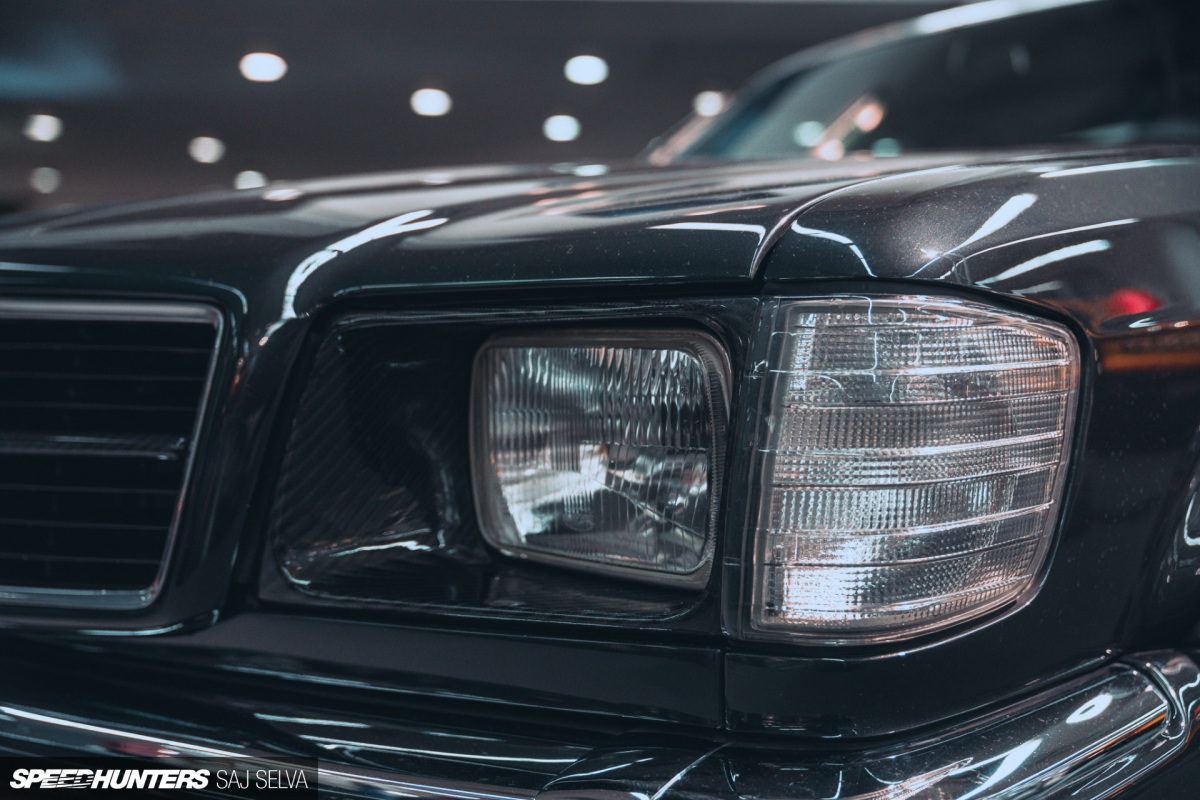
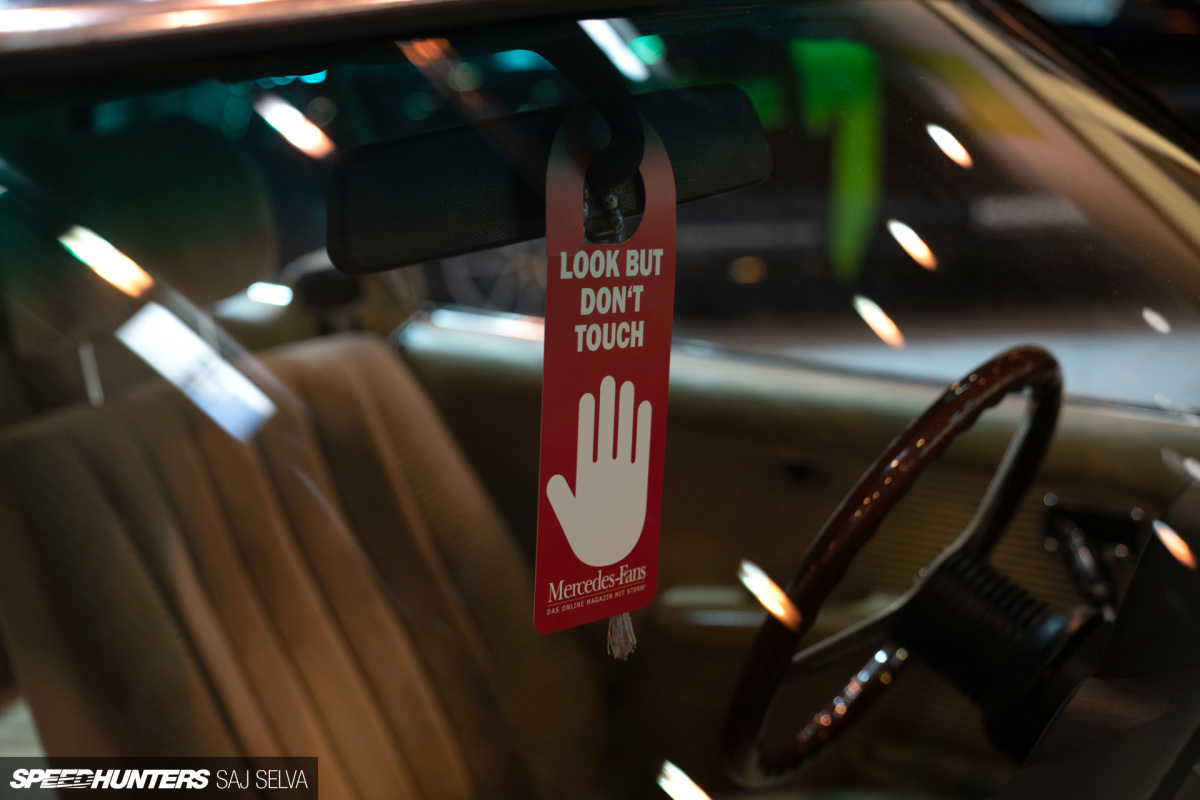
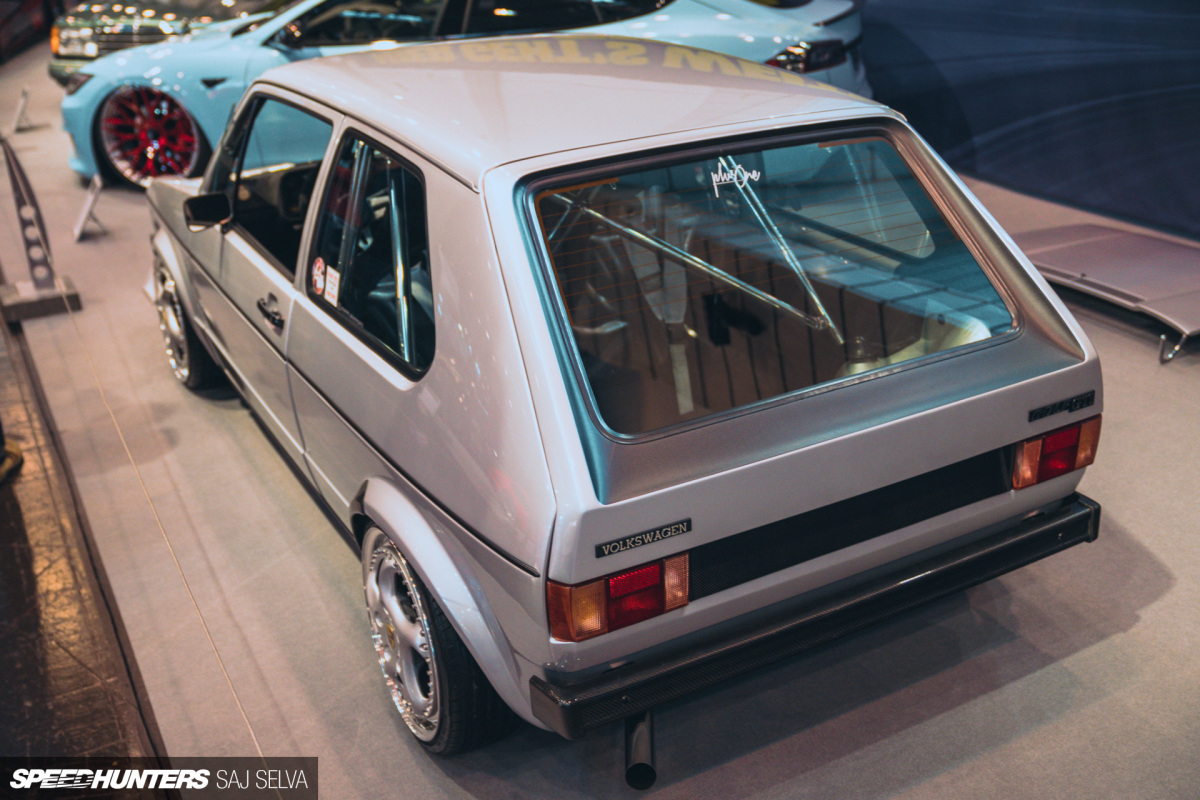
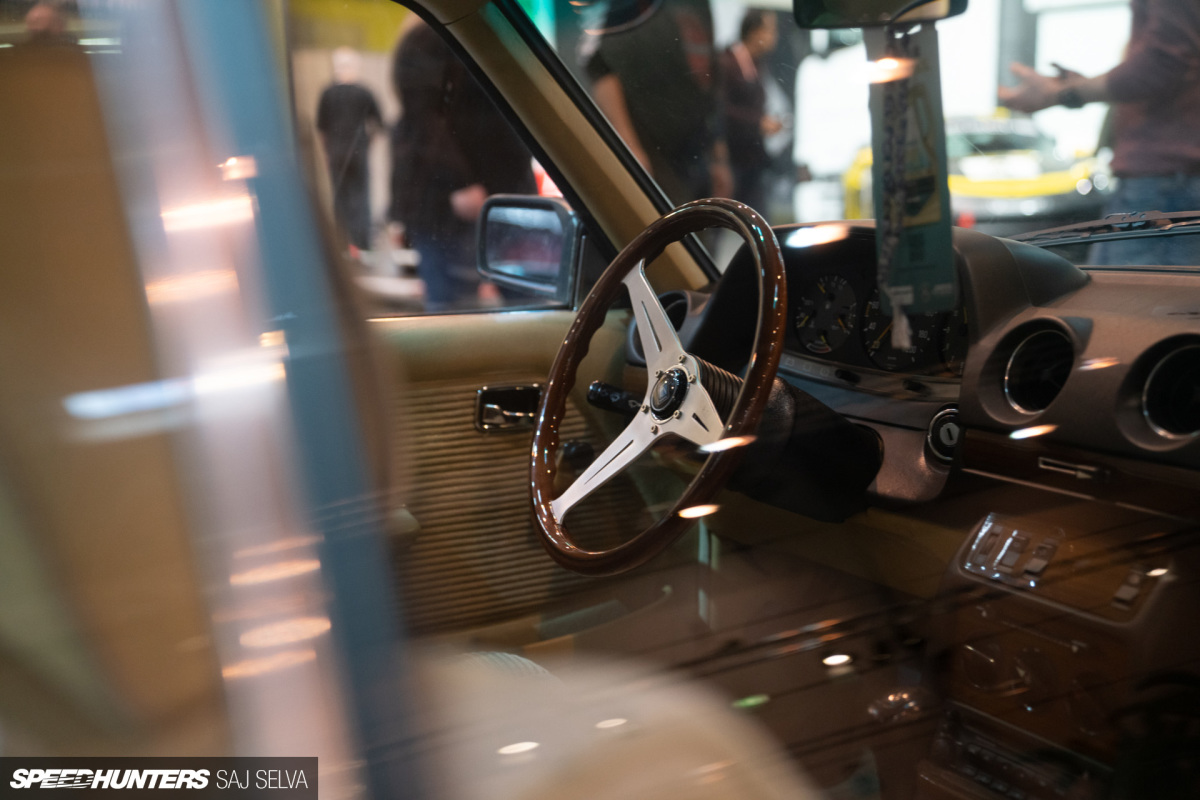
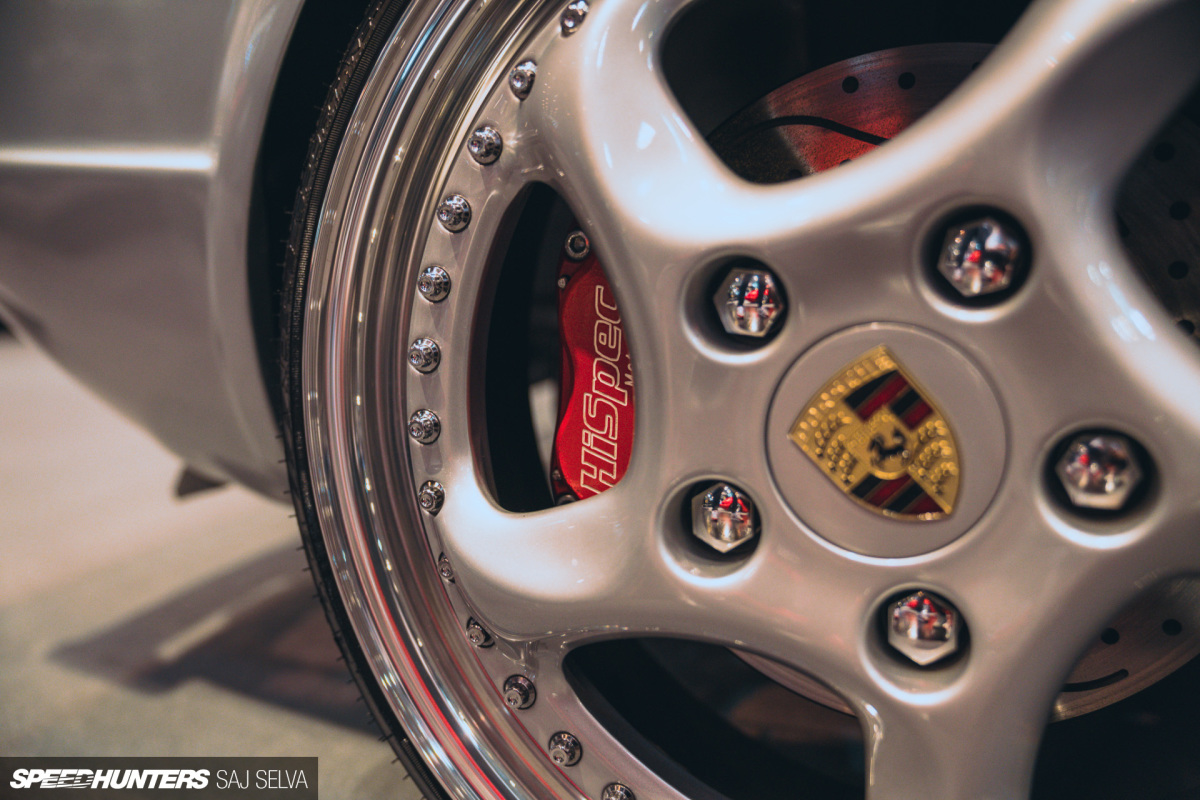

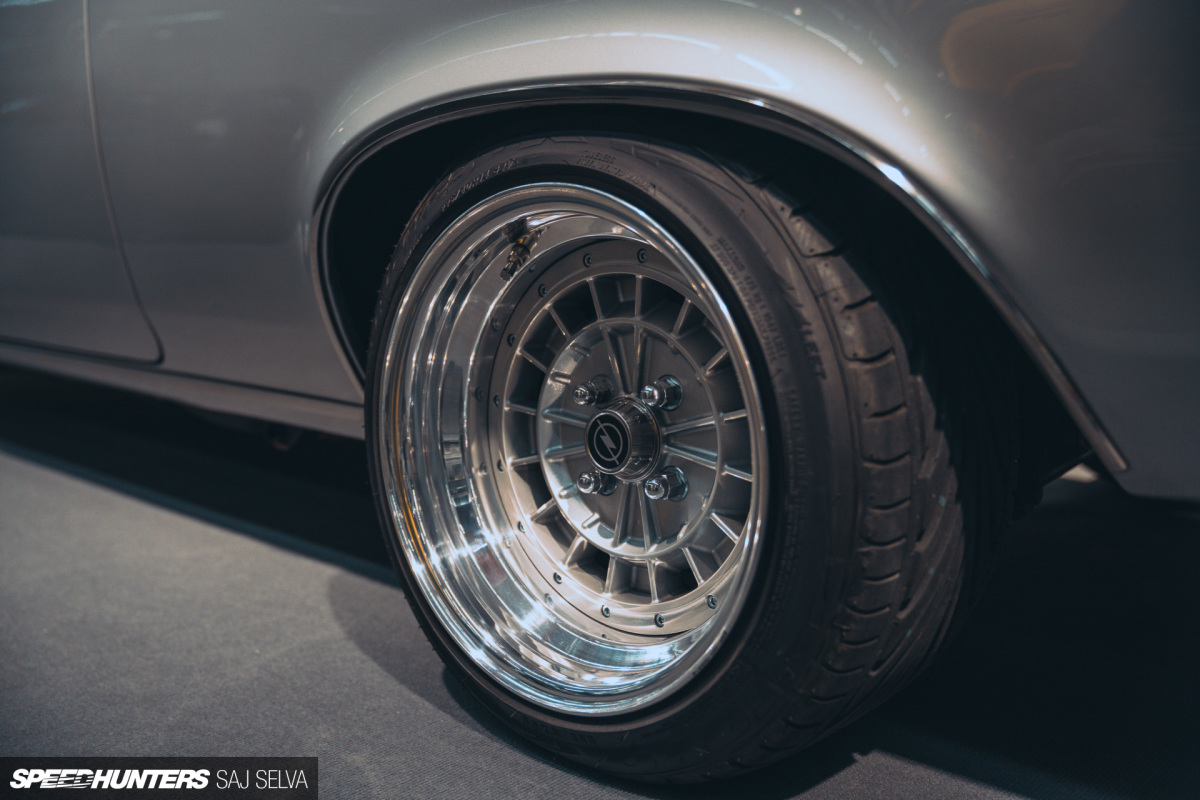
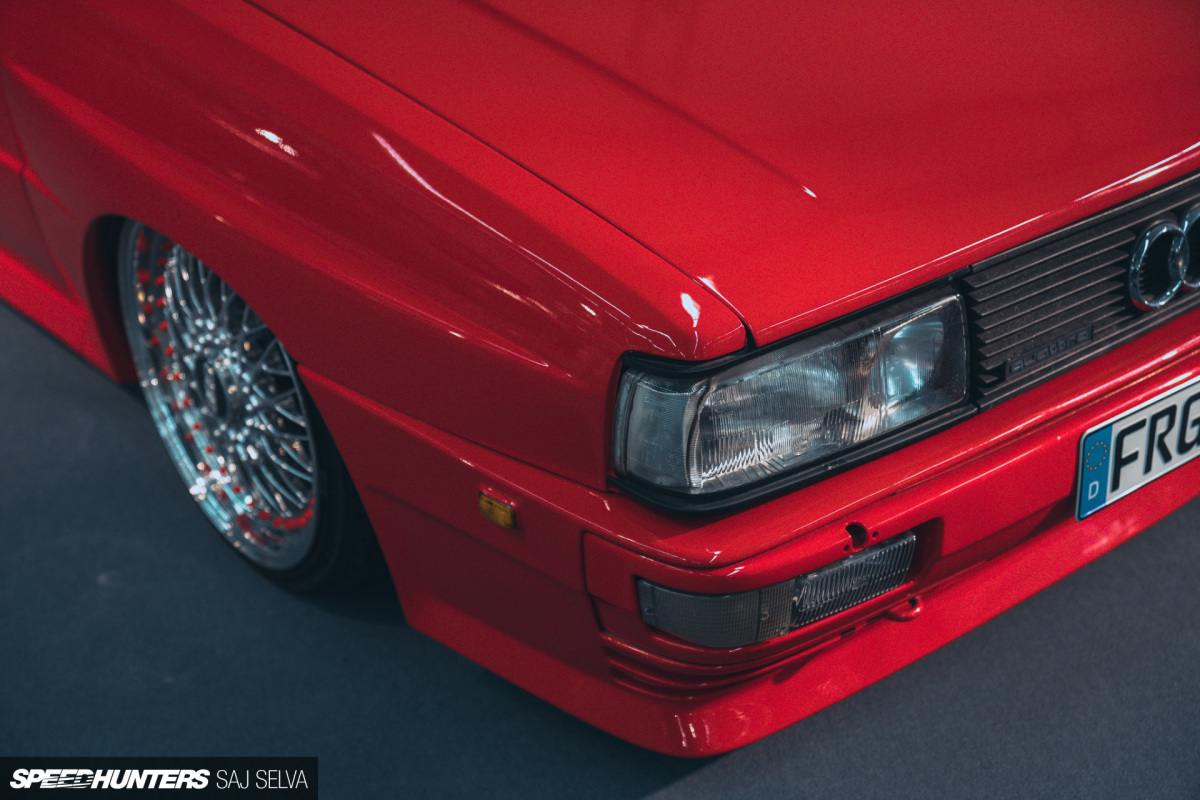
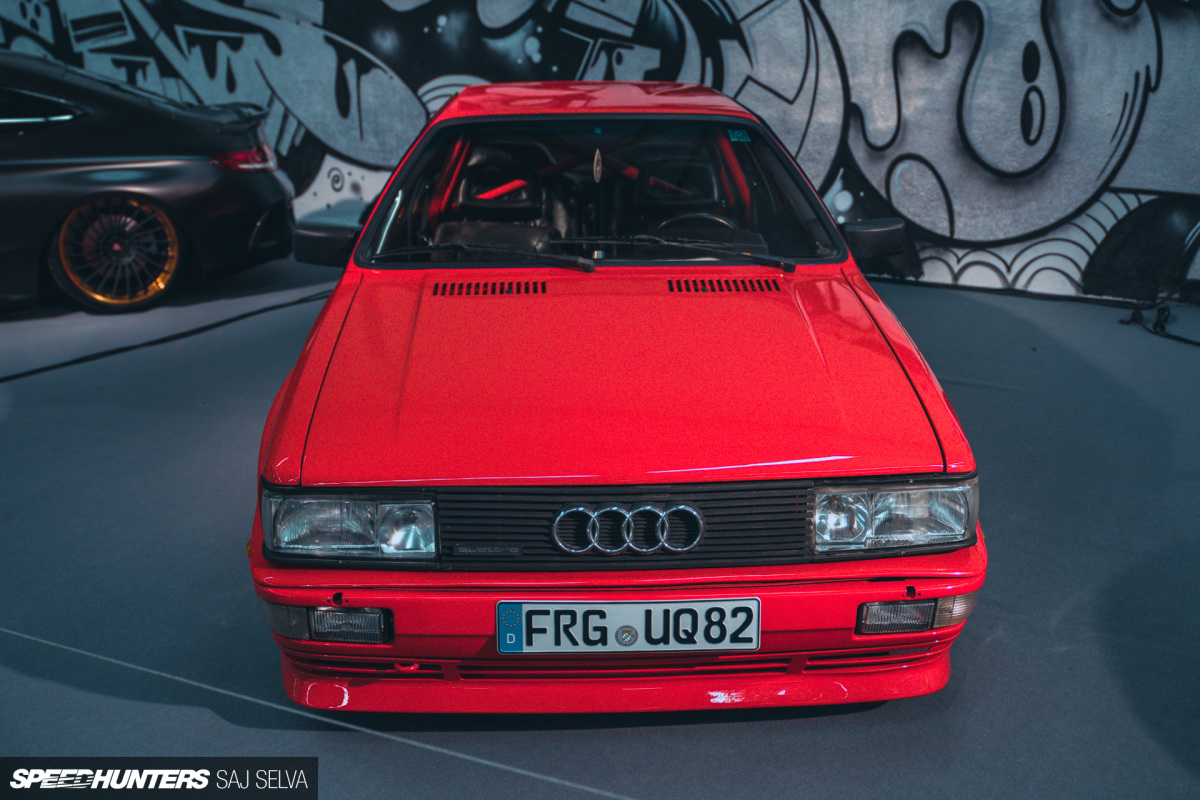
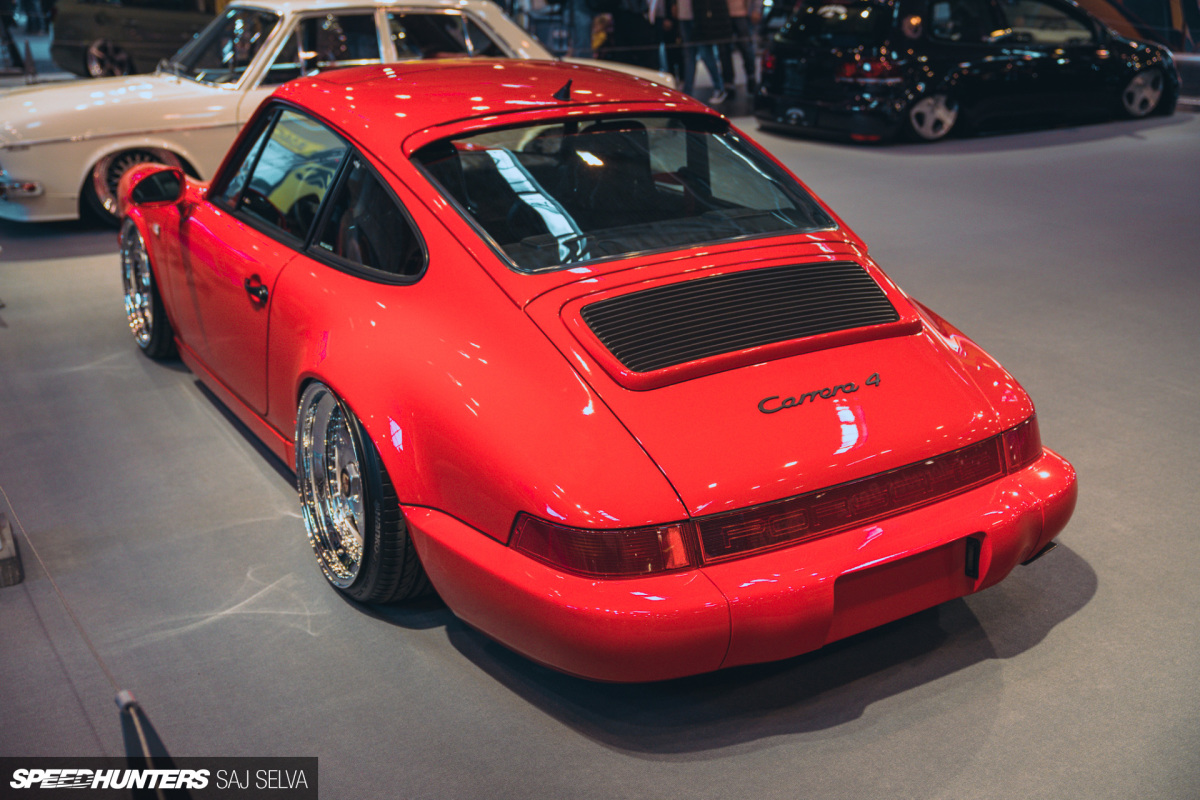
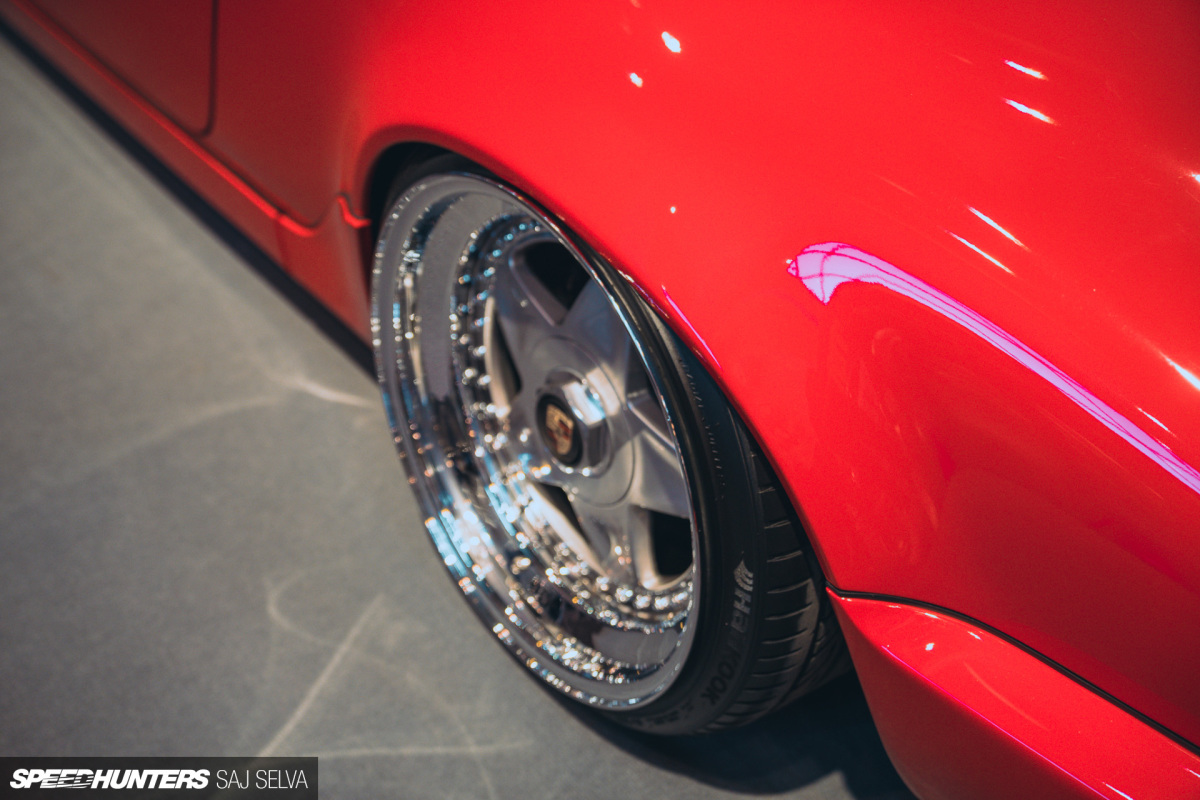
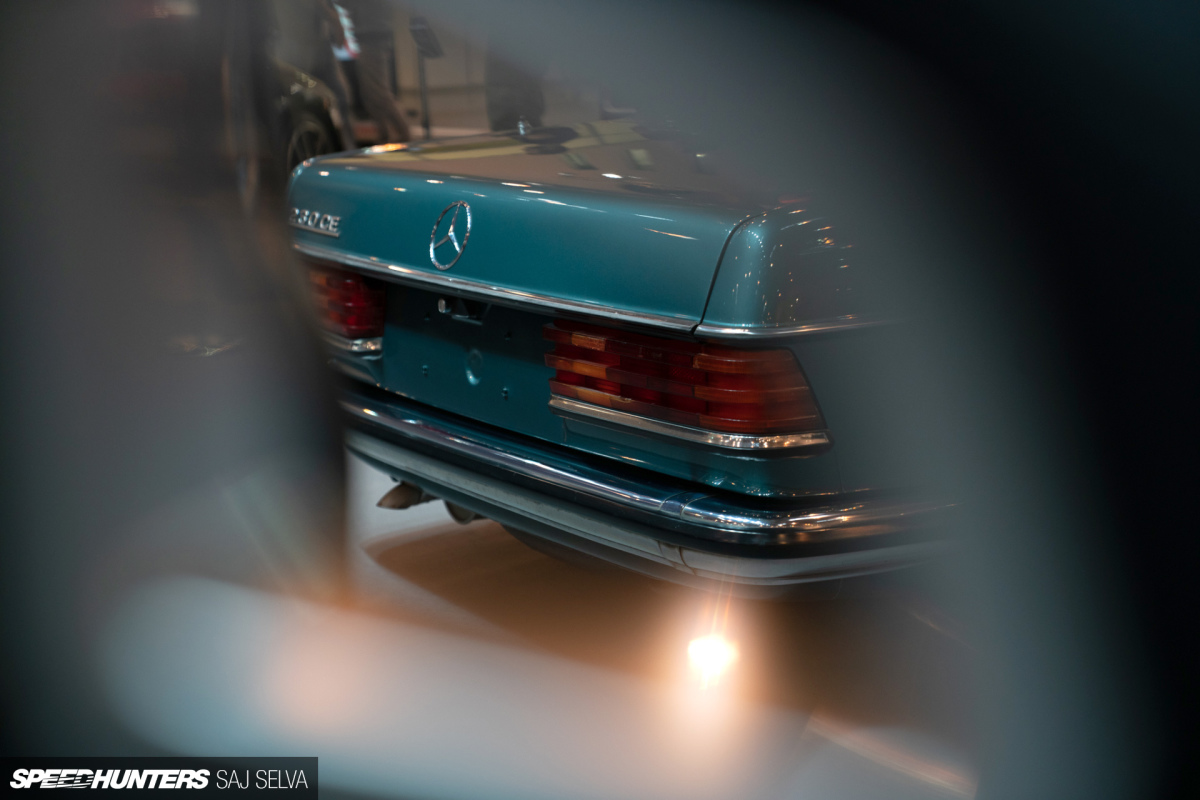
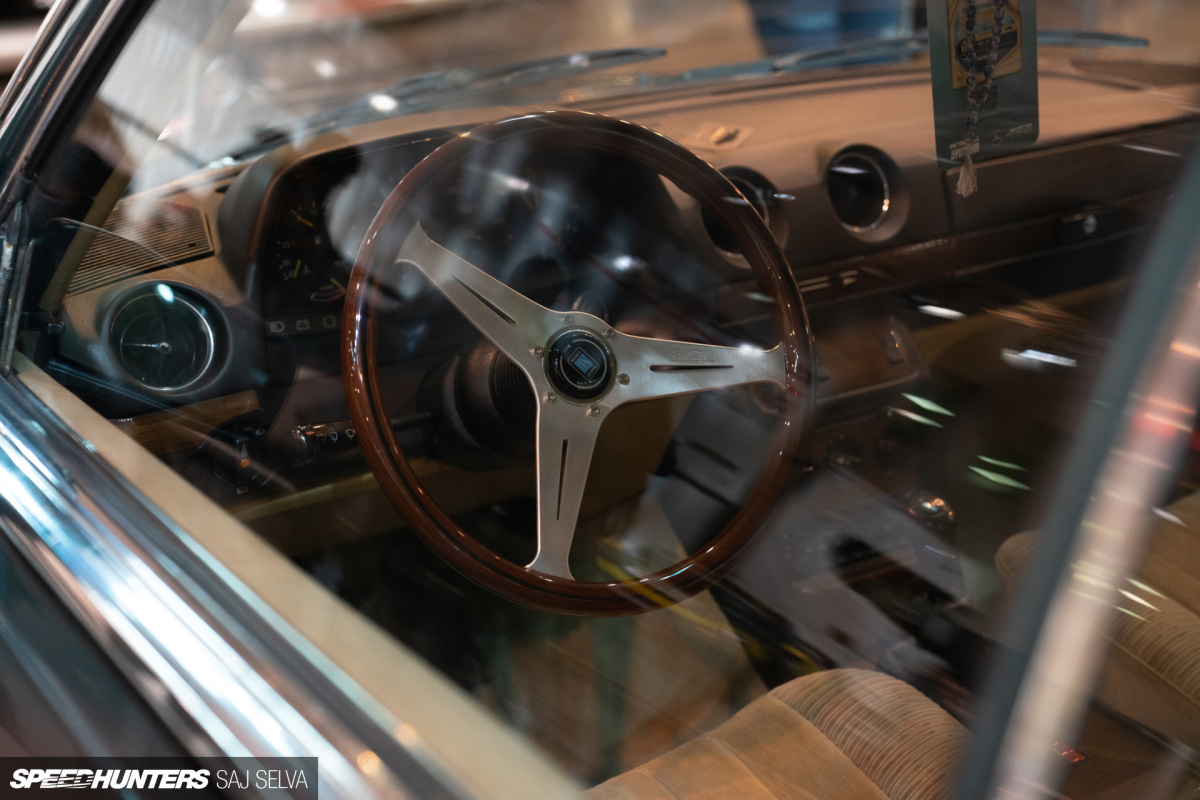
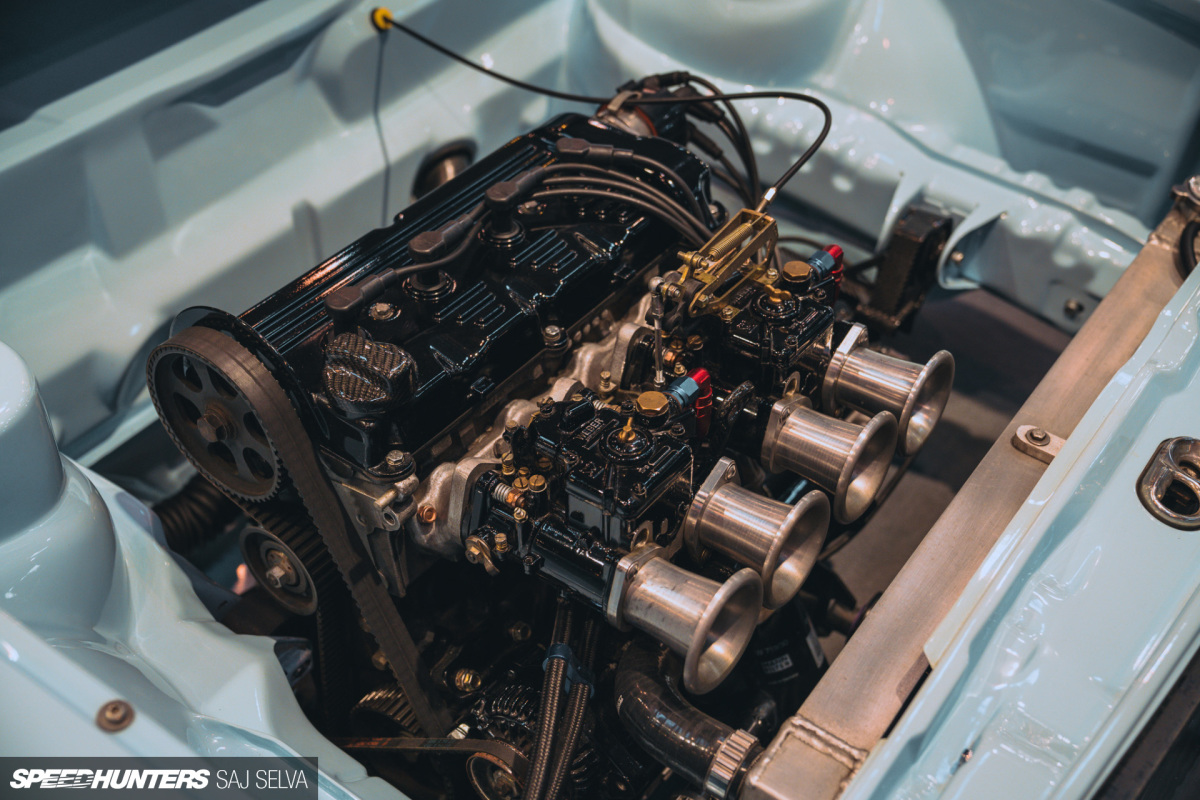
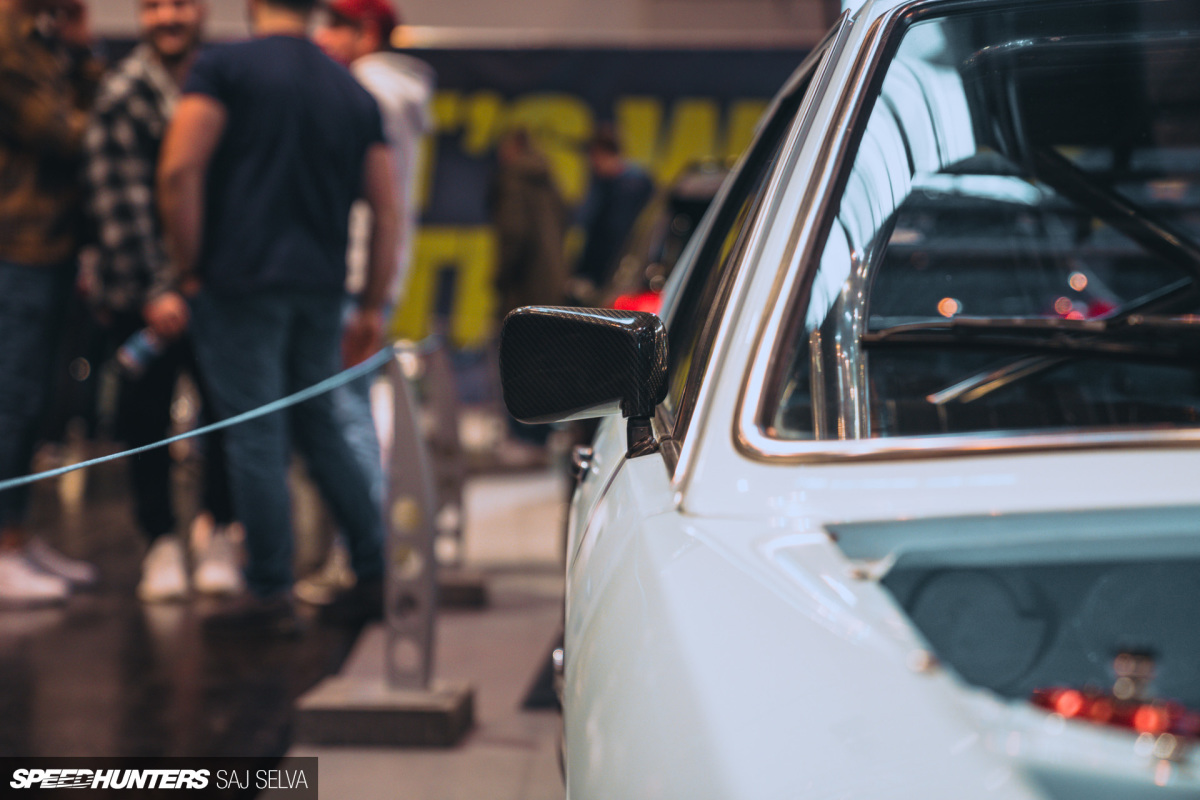
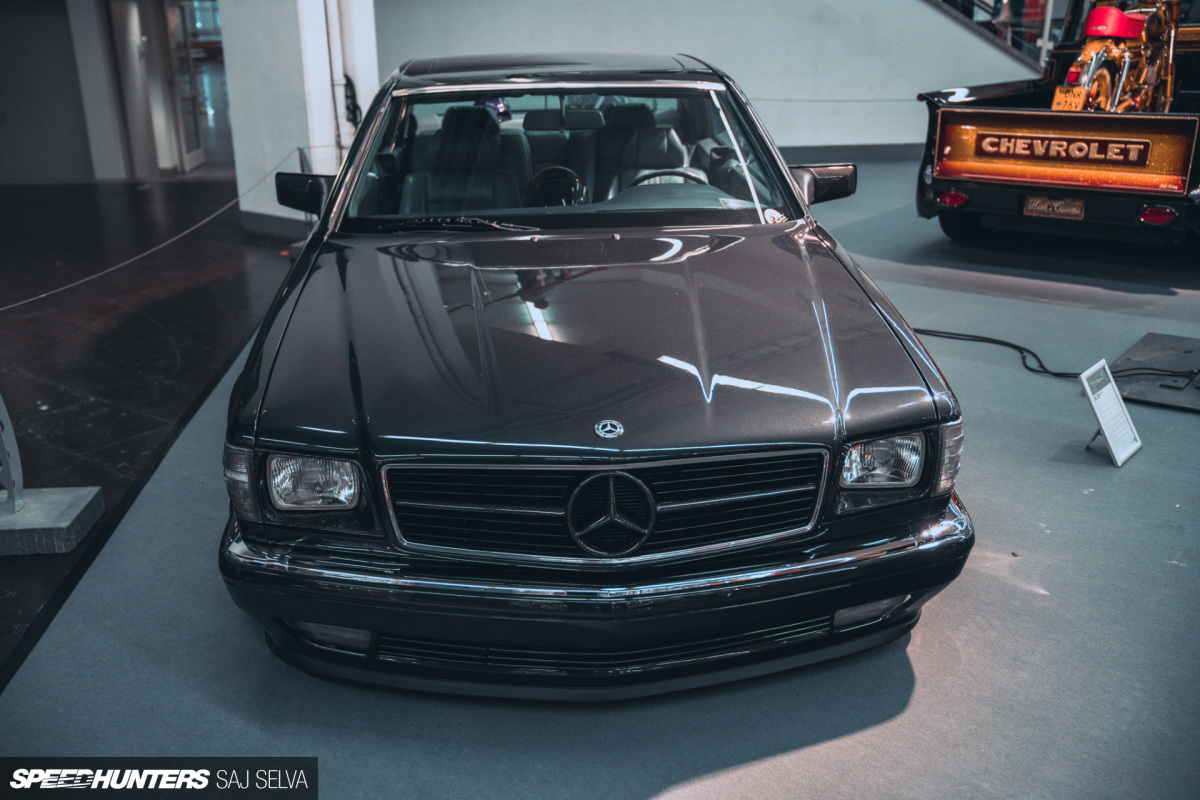
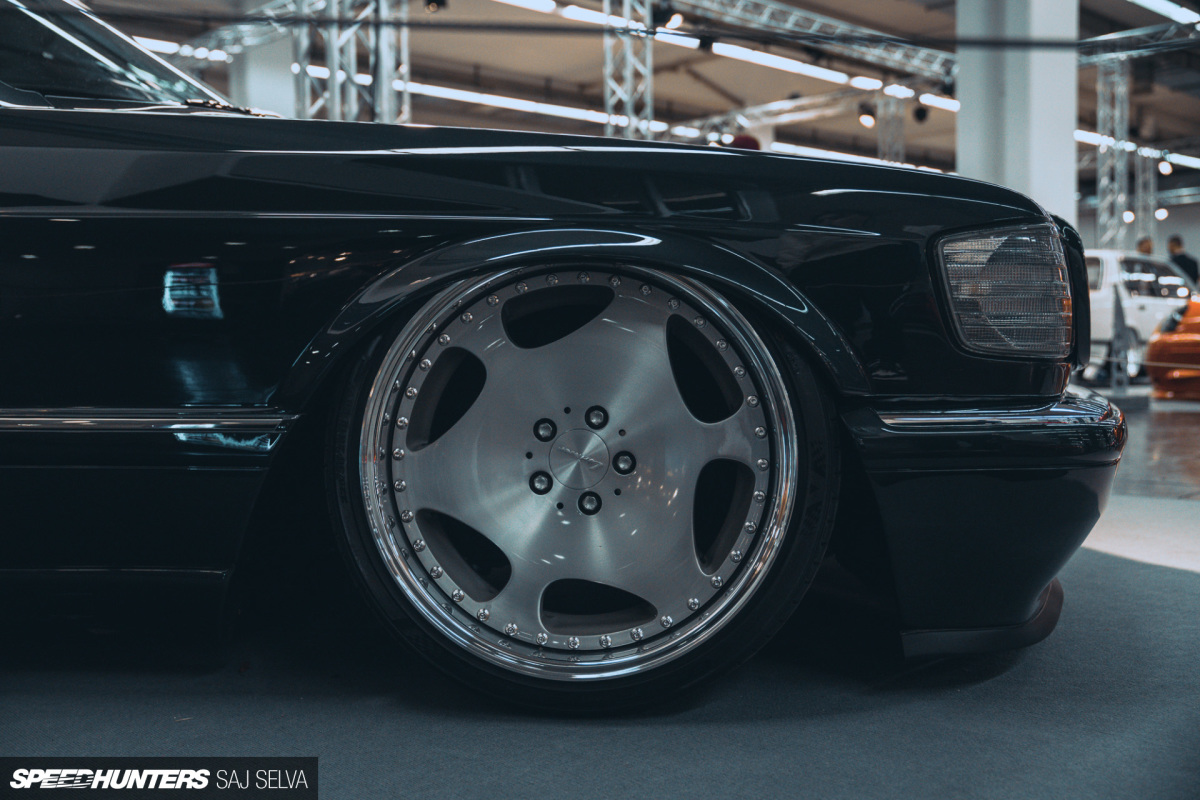
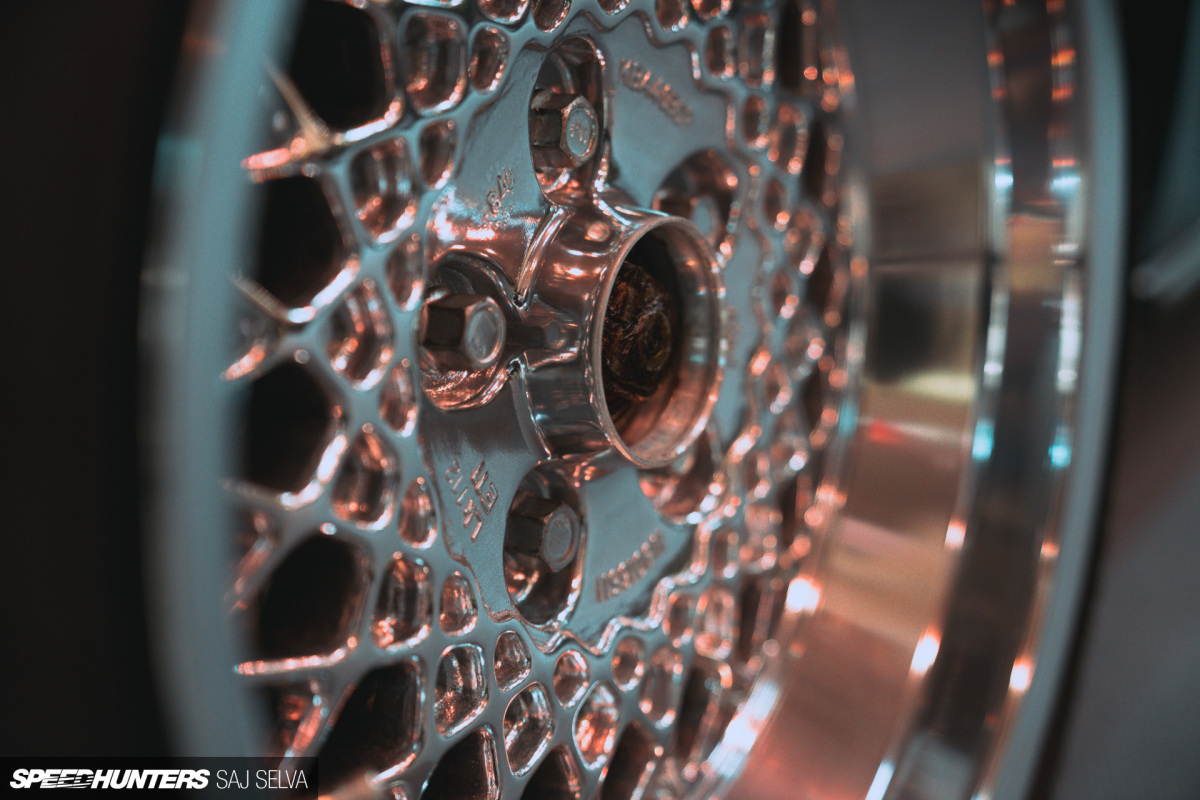
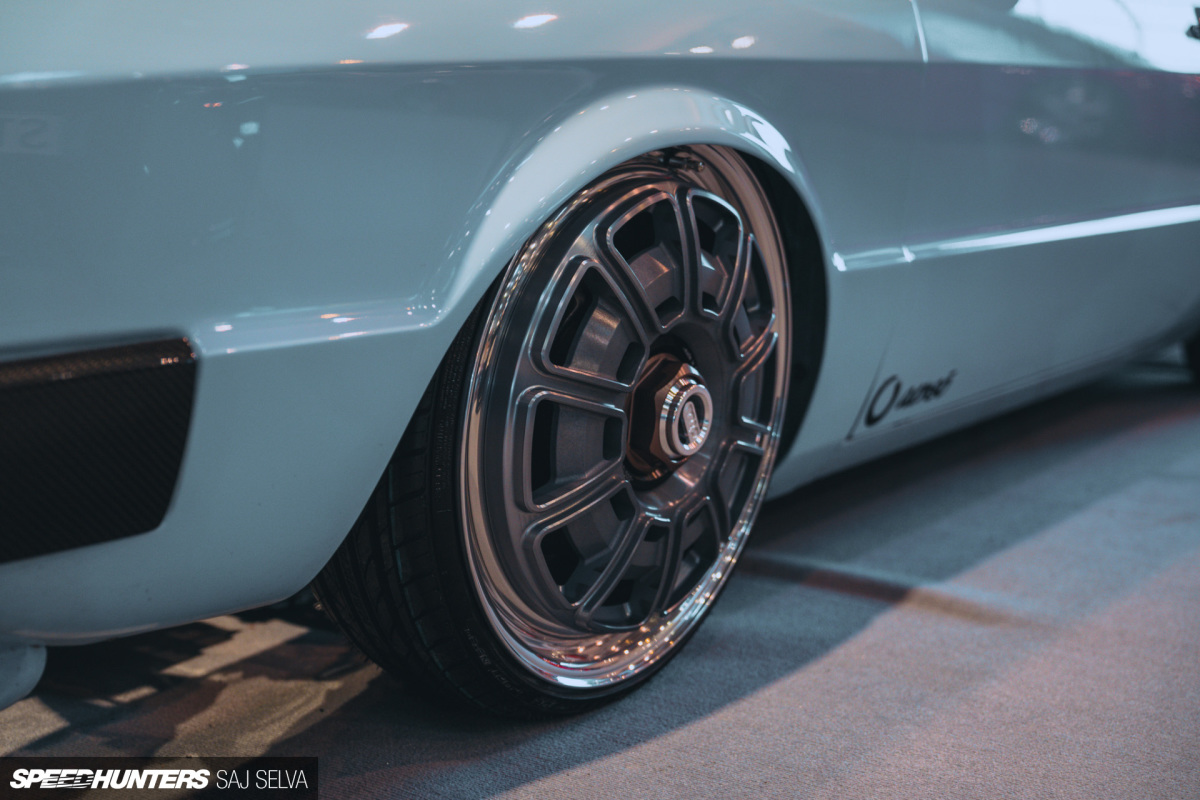
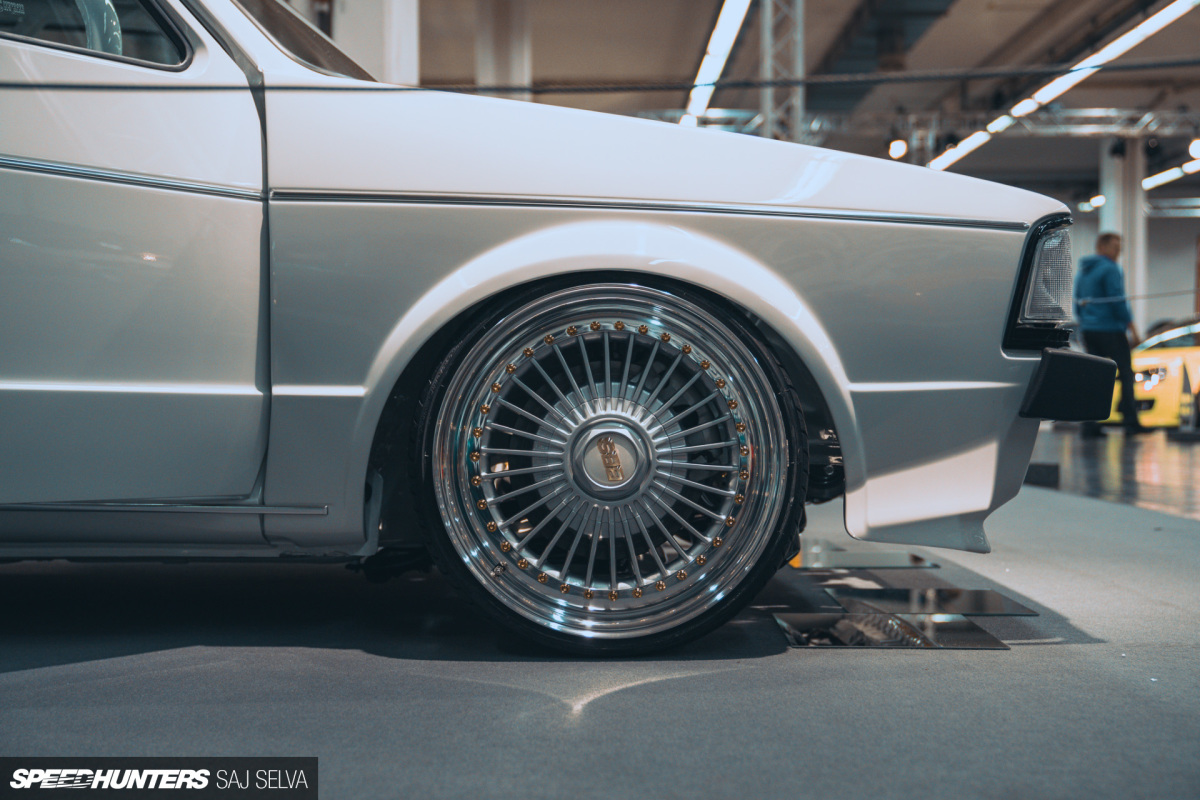
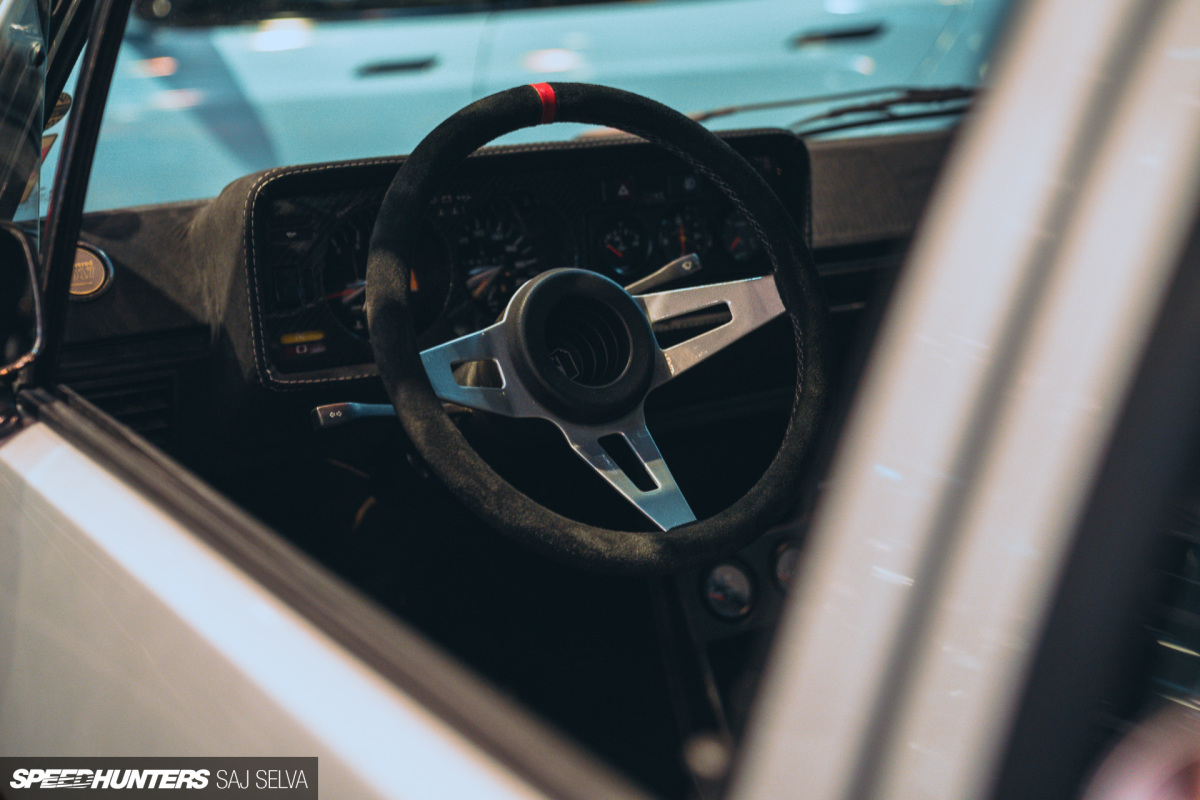
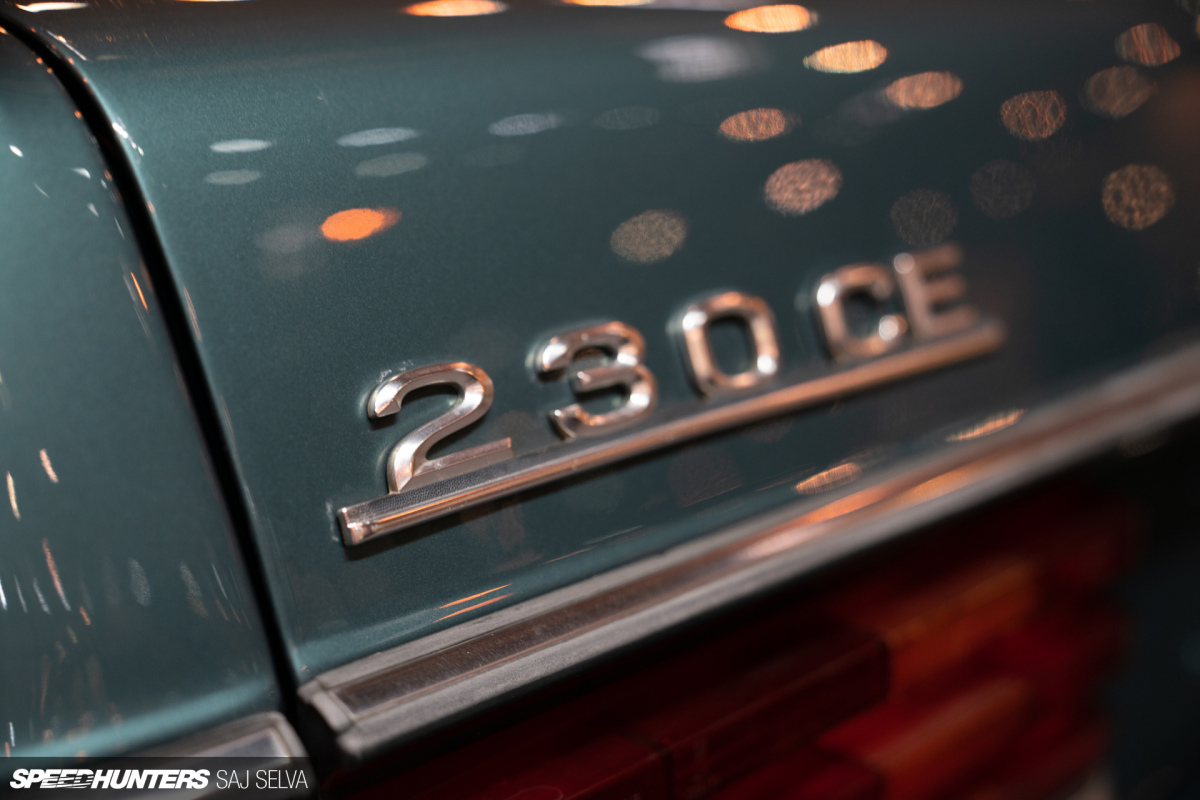





Cool article and as a German I can definitely attest to some of the points made here.
But just to chime in with a bit of legalese correction: That plate which you claimed means the guy has owned the car since new... well, nope. It IS indeed an old style DIN-plate and not a newer Euro-plate. These were discontinued about 20 years ago, in November 2000. However, at the end you can see a 'H' after the numbers. The H stands for 'historical' and declares the car to be a classic and culturally relevant. The car has to be at least 30 years old. You can have your car inspected by the TÜV to see if it's worthy of getting a H-plate, the benefits are lower taxes and often lower insurance but on the downside, it really limits you in terms of modifications as the only mods you are allowed to do are those that were possible 10 years after the initial registration of the car. Historical plates have existed since about 1997. Since 2000, even historical tags have to look like the newer Euro-plates. There were a few attempts to bring back the old style plates for historical cars, but they were shot down as "all plates have to look uniform". The point being - that plate does not mean the owner has had the car since new.
Hi Bastien thanks for reading! I'm going to go and shout at my German friend from the show who led me to believe otherwise lol. Thanks for correcting me, it's crazy to see how strict the government can be even about license plates!
Mario/Saj,
Nice shots and words! I am obsessed with German cars especially I own a MKIII Jetta that I have owned since 1995. It's all tuned with an NGP built 2.0. The second picture of the Golf with the chrome/brass theme and tan leather interior...WE NEED A FULL FEATURE ON THAT CAR! Were you guys messing with us? Just one pic of that car? You're fired! Just kidding! But not about a full feature. And let's hurry. I am waiting...
Hi David, thanks for the kind words. Unfortunately Saj and I were only in Essen overnight, and had a lot of things to shoot in what was only about 5 hours total at the biggest show in Europe! Not enough there for a full feature.
It was a very impressive little car that Polo, the interior was great.
And LA people would complain about exhaust regulations :p
All in all an article I do like but a few points I'd like to make. When it comes to the quattro well the airbags aren't near anywhere to being better than traditional suspension. Especially when it comes to a car that you can find about a billion aftermarket parts. I also don't like the way you equate a whole continent with one country even when it comes to car modifying. There's a lot more to the way Europeans modify cars than what German police approves. In my point of view most of the mods found on a car are inspired from a racing car no matter if it's a rally car, a hillclimb car or anything else. Look at all those ITB and the big tyre in small wheel setups. All these came from rally regulations. That's why even today there are people making huge hp from small engines and don't just LS swap everything. By the way your last name is Greek ?
"I also don't like the way you equate a whole continent with one country even when it comes to car modifying"
Appreciate the feedback! What's worth noting is that, in this particular article, i've focused on the 'Euro' style which has its history rooted in Germany. I wouldn't for a second assume it's the only style Germany pursues, and i'd love to do a follow-up with some of the the other scenes and styles in Europe soon.
With regards to the OEM suspension, this will always polarize opinions but modern air suspension - from what i've driven and experienced - is absolutely on par with more traditional suspension, and that's not factoring in stock dampers which are 40+ years old.
Glad you enjoyed the article - It was good fun to make.
I too will miss the narrow bodied 911's and that golf in the background must be embarrassed about it's wheels as it's trying to hide them
Mario/Saj,
Here's a pick of my MKIII Jetta. I had my car cover on 'cause my neighbor's grass cutting service was here. Plus the pollen count is ridiculous today. And it keeps it clean(er).
wow that 560sec love to see more one my all time faves just wish id have bought on when they were a reasonable price.
Nice article! One correction though; that's not a C20LET in the Ascona. It's a CIH 16v engine and it is as period correct as it can be. Keep up the good work...
Thanks for the correction Furi. It may cause some backlash here but I'm more of an old school Ford guy, even if I do love Opels of the same era. I'm glad I learned something new though! I'll definitely look into the CIH.
You should do more old Opels... Here's my 76 Kadett for starters haha.
follow @w123demon for a real custom w123 sedan , that c123 coupe is very underwhelming, in fact w123 coverage in general has remained underwhelming and nonexistent for years im just glad it finally had its day on here.
Wide, shinny, fat dishes everywhere. Dishes are full of vitamins, mineral and all the goodness for growing healthy and strong petrolheads.
Got to love the Euro car culture
It's just something different
Any more information on the C1 Audi 100?
Sadly no, Lindo. Unfortunately we were so pressed for time we basically sprinted two laps of each hall with Saj taking photos of whatever I pointed at!
Can anyone tell me the name of the paint color on that W123 Benz?
That is NOT a narrowbody 911. Narrow 911s are 1977 and earlier. 1978 and later ALL had rear flares.
Hey Rob! Whilst true compared to the earliest models, that^ became the standard narrow body vs the Turbo's wide hips; I think it would be a bit confusing to refer to them both as wide body 964's no?
Thanks for reading!
I've asked this before, but please do some features on old Opels too. There are a lot of great examples, if you want to look for them. It's not that hard and would bring some variety among the VWs, Porsches and the JDM stuff. I know there was that one article about the Ascona A with the Volvo engine, a while ago and it was great, but us Opel people need more. And please correct the engine description on that Ascona. That's a 16V CIH engine and as such, a much bigger deal than a plain C20LET, which is a turbo engine anyway. Other than that, thumbs up for the article.
Thanks for the info Mikko! I'm glad you enjoyed it. Saj and I had planned to explore a lot of European car culture this year, but unfortunately COVID put a stop to that haha. I can guarantee there will be a lot more coverage once this has all passed, so don't worry. Watch this space!
The part where it says foreign cars can be seized and taken for a TUV inspection is wrong.
It gets done, but it's actually illegal.
A car registered in a EU country is legal to drive in germany wether or not it meets TUV.
You can only be fined for things like bald tyres.
I'd look up the legislation again, but I'm too lazy and not a journalist.
They can ban you from driving if your car doesnt meet basic road safety though (like spitters/spoilers with sharp edges and such)
https://www.google.com/url?q=https%3A%2F%2Fyespornpleasexxx.com